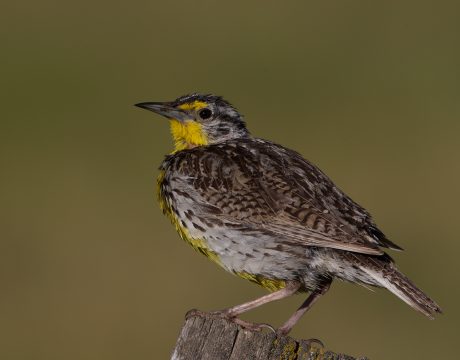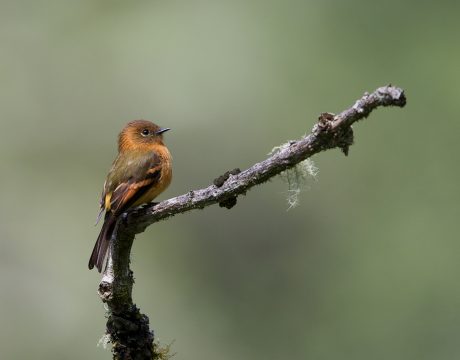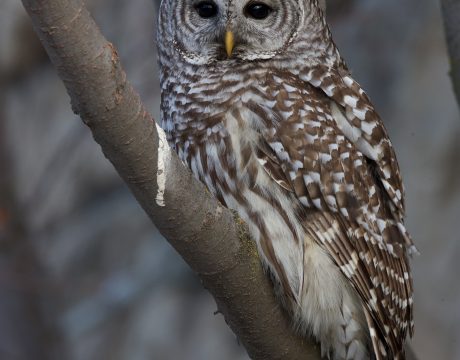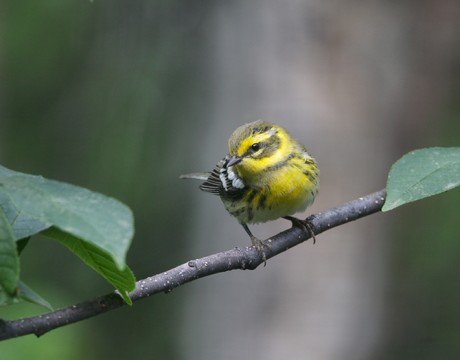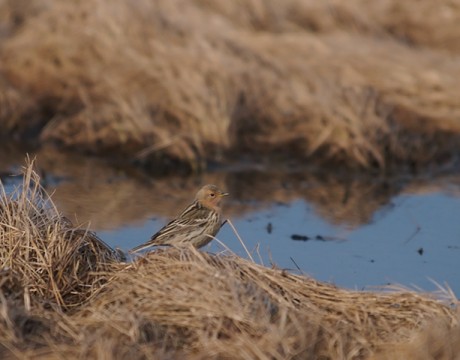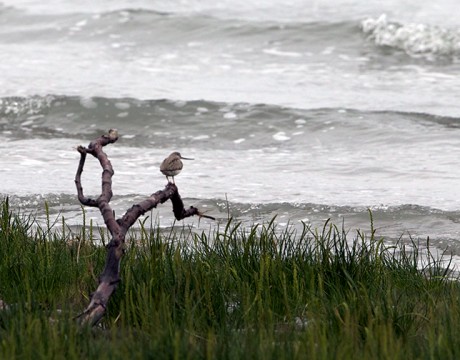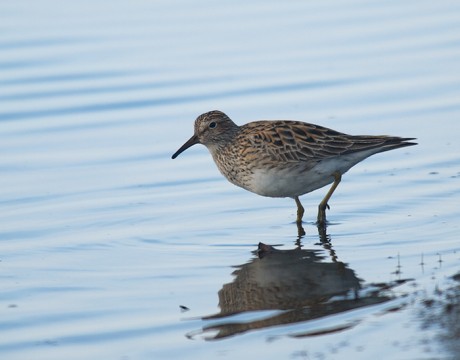Return of Bird of the Week: Western Meadowlark
There are compensations for leaving Alaska. Surely one of them is the Western Meadowlark. It’s one of our most abundant and widely distributed grassland birds, found in open country from natural and planted grasslands of the Northern Great Plains to the Sagebrush Sea of the Intermountain West to the tidal flats along the Pacific Ocean. Its common occurrence, colorful plumage, and superb song make it one of North America’s most popular birds. Six states have named it their state bird. Despite the name and beautiful song, it’s not a lark. It’s an Icterid, a cousin to the Red-winged and Rusty…
Return of Bird of the Week: Rufous-winged Sparrow
The Rufous-winged Sparrow is just barely a North American bird, if you are a birder who keeps lists. This sparrow just barely occurs in southern Arizona; most of its range is in Medico which, for North American birders, isn’t part of North America. Geography doesn’t enter into it. The Rufous-winged has the distinction of being one of the last bird species in the United States to be discovered and described. It’s an uncommon resident of local distribution in the Sonoran Desert region from south-central Arizona to northern Sinaloa, Mexico. The species prefers the scrub and grasses along washes and streams….
Return of Bird of the Week: Great Blue Heron
More than any other North American bird species, the Great Blue Heron reminds you that birds evolved from dinosaurs. If anything brings the images of a flying dinosaur to mind, it is a Great Blue Heron slowly lumbering across the sky. WC is used to seeing these big herons doing strange things, but last weekend they showed him something new. A dozen or so birds were perched along the top of the cliff. the canyon rim along the middle Snake River, near Hagerman, Idaho. There’s no food up there; just old lava rock and some discouraged sagebrush. And a dozen…
Return of Bird of the Week: Cinnamon Flycatcher
Without exaggeration, there are hundreds of New World flycatcher species. For this week’s Bird of the Week, we’ll head to the tropics, for one of the prettiest, the Cinnamon Flycatcher. The cinnamon and brown-green coloration is lovely. It’s fairly common bird on both the east and west slopes of the Andes, from Venezuela down to Bolivia. It’s often seen in mixed flocks and seems to hang around after the rest of the birds have moved along. The species also lets WC show off the difference in image quality in low light between his Canon 1D-X and the old Olympus E-5…
The Last Bird of the Week – Townsend’s Warbler
This is the last of Wickersham’s Conscience’s Birds of the Week. We’ve run through the last species WC photographed in Alaska. The total is 187, if anyone is curious. And for this last species, WC has saved the beautiful Townsend’s Warbler, Alaska’s prettiest warbler. That colorful, strongly marked face makes it easy to identify in the field. While this is a female, and less strongly marked, you can still see what a handsome warbler this is. You can see how much vivid the male’s coloration is in this photo from Anchorage. A beautiful bird, and a good place to wrap…
Bird of the Week – Red-throated Pipit
A last Asian vagrant, a cousin to the American Pipit, this is a Red-throated Pipit. As you can see, it isn’t just the throat that is red but the whole head. This is another “Uncommon” Asian vagrant. Birders get slightly more excited about this one, possibly because it isn’t just another sandpiper. By the way, the bird was incredibly hard to see as it moved among the dead early spring grasses. For more bird photos, please visit Frozen Feather Images.
Bird of the Week – Wood Sandpiper
Yes, yet another sandpiper, but this one is the last and, besides, it’s another Asian vagrant. We found this bird in the swamp near the Far Boneyard on Gambell, St. Lawrence Island. It’s found a bit more often than last week’s Terek Sandpiper, so its status is “Uncommon,” as opposed to “Casual,” meaning that it is seen pretty much every year, usually out in the Aleutian Islands. The greenish-yellow legs, whitish eyebrow and short, dark bill make this fairly easy to identify in the field. Among serious birders, seeing a Wood Sandpiper is no big deal; it was a lifer…
Bird of the Week – Terek’s Sandpiper
WC’s Bird of the Week feature is reaching the end of WC’s photo list of Alaska birds. Three of the next four birds are Eurasian species that WC was lucky enough to photograph. The first is a Terek’s Sandpiper, which appeared in Anchorage a couple of years ago. Note the distinctive long, up-turned bill on this species. You can’t see if clearly in this photo but the legs are yellow-orange. Terek’s are a Eurasian species, “casual” in Alaska, a birding term that means you see them once in a blue moon. As you might imagine, there were hordes of birders of…
Bird of the Week – Baird’s Sandpiper
WC overlooked a sandpiper species when working through the long list of sandpipers that breed in Alaska: Baird’s Sandpiper. Baird’s move through the southern two-thirds of the state en route to their high arctic breeding range. Like the Pectoral Sandpiper, the darker feathers end half way down the chest, but tend to fade out, rather than a sharp transition. But you can tell them apart by the black legs, in contrast to the yellow legs of a Pectoral. One of the most remarkable characteristics of Baird’s is that it makes one of the largest metabolic investments in egg production known in…





